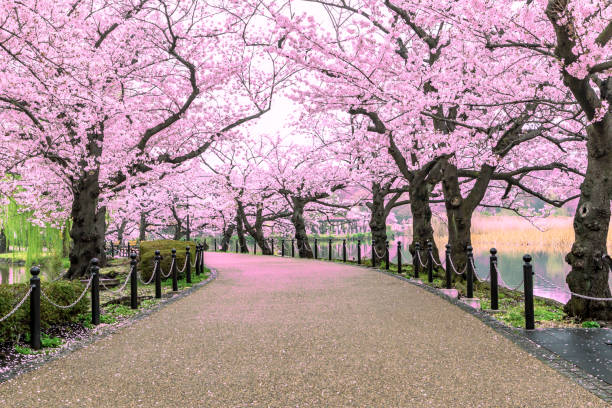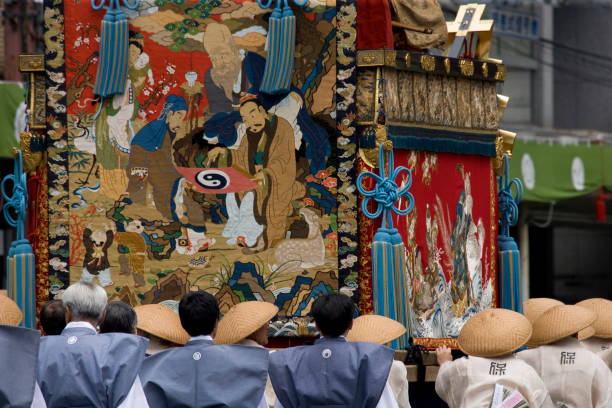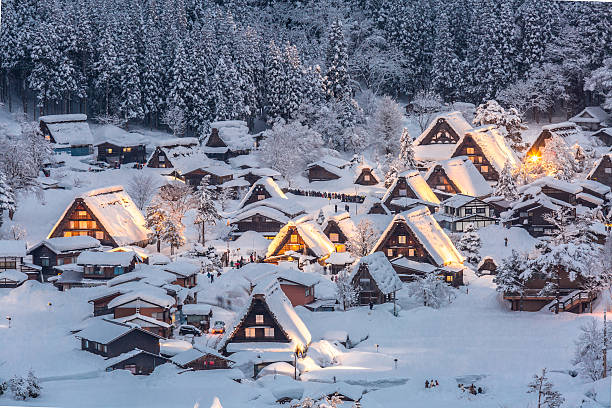Japan is a country of breathtaking beauty, rich culture, and diverse experiences that change with the seasons. Whether you’re dreaming of cherry blossoms in spring, vibrant autumn foliage, or snowy winter wonderlands, there’s no wrong time to visit Japan—but the best time depends on what you’re looking for. In this Seasonal Guide to Japan, we’ll explore the unique charms of each season, highlight the best activities and festivals, and help you decide when to plan your trip.
Why Timing Matters in Japan
Japan’s climate varies significantly from north to south, offering everything from tropical beaches in Okinawa to snowy slopes in Hokkaido. Each season brings its own festivals, natural wonders, and cultural experiences, making Japan a year-round destination. However, the timing of your visit can greatly impact your experience, from weather conditions to crowd levels and costs.
Spring in Japan: Cherry Blossom Season (March to May)

Why Visit in Spring?
Spring is one of the most popular times to visit Japan, thanks to the iconic sakura (cherry blossoms). The delicate pink flowers symbolize renewal and are celebrated with hanami (flower-viewing) parties across the country.
Highlights:
- Cherry Blossom Festivals: Visit Tokyo’s Ueno Park, Kyoto’s Philosopher’s Path, or Osaka Castle Park for stunning sakura displays.
- Mild Weather: Spring temperatures are comfortable, ranging from 10°C to 20°C (50°F to 68°F).
- Golden Week: Late April to early May is a series of national holidays, but be prepared for crowds and higher prices.
Tips:
- Book accommodations and transportation well in advance, as this is peak tourist season.
- Consider visiting lesser-known spots like Hirosaki Castle in Aomori for cherry blossoms without the crowds.
Summer in Japan: Festivals and Fireworks (June to August)

Why Visit in Summer?
Summer in Japan is lively and colorful, with countless festivals, fireworks displays, and outdoor activities. It’s also the best time to explore Japan’s northern regions and enjoy cooler weather.
Highlights:
- Gion Matsuri (Kyoto): One of Japan’s most famous festivals, featuring elaborate floats and traditional performances.
- Fireworks Festivals: Don’t miss the Sumida River Fireworks in Tokyo or the Nagaoka Festival in Niigata.
- Hokkaido’s Lavender Fields: Visit Furano in July to see vibrant lavender fields in full bloom.
Challenges:
- Rainy Season (June to mid-July): Expect frequent rain and high humidity, especially in central and southern Japan.
- Heat and Humidity: Temperatures can soar above 30°C (86°F), so stay hydrated and take breaks indoors.
Tips:
- Pack lightweight, breathable clothing and an umbrella.
- Head to Hokkaido or the Japanese Alps for cooler temperatures and outdoor adventures.
Autumn in Japan: A Symphony of Colors (September to November)

Why Visit in Autumn?
Autumn is a favorite season for many travelers, thanks to the stunning koyo (autumn foliage) and pleasant weather. The vibrant red, orange, and yellow leaves create a picturesque backdrop for exploring Japan’s temples, gardens, and mountains.
Highlights:
- Autumn Foliage Spots: Visit Nikko’s Kegon Falls, Kyoto’s Tofuku-ji Temple, or the Japanese Alps for breathtaking views.
- Mild Weather: Temperatures range from 15°C to 25°C (59°F to 77°F), making it ideal for outdoor activities.
- Cultural Festivals: Experience the Takayama Autumn Festival or the Jidai Matsuri in Kyoto.
Tips:
- Mid-November is the peak time for autumn foliage in most regions, but timing varies by location.
- Combine your trip with visits to onsen (hot springs) for a relaxing experience.
Winter in Japan: Snowscapes and Serenity (December to February)

Why Visit in Winter?
Winter in Japan is magical, with snow-covered landscapes, festive illuminations, and world-class skiing. It’s also a great time to enjoy fewer crowds and lower prices.
Highlights:
- Skiing and Snowboarding: Hokkaido’s Niseko and Nagano’s Hakuba are top destinations for winter sports.
- Winter Illuminations: Visit Kobe’s Luminarie or Nabana no Sato in Mie for dazzling light displays.
- Onsen Retreats: Soak in hot springs surrounded by snow, such as those in Kusatsu or Gero.
Challenges:
- Cold Weather: Temperatures can drop below freezing, especially in northern regions.
- Shorter Days: Daylight hours are limited, so plan your activities accordingly.
Tips:
- Pack warm clothing, including thermal layers and a good winter coat.
- Visit Okinawa for milder weather and subtropical beaches.
Regional Considerations
Hokkaido (North)
- Best for: Winter sports, summer escapes, and lavender fields.
- Avoid: Late autumn (November) when many attractions close for the season.
Tokyo and Central Japan
- Best for: Cherry blossoms in spring, autumn foliage, and cultural festivals.
- Avoid: Peak summer heat and humidity.
Kyoto and Western Japan
- Best for: Temples, gardens, and traditional culture year-round.
- Avoid: Golden Week (late April to early May) due to crowds.
Okinawa (South)
- Best for: Beaches and subtropical climate in winter and spring.
- Avoid: Typhoon season (August to October).
Conclusion: When Will You Visit Japan?
Japan is a destination that shines in every season, offering unique experiences no matter when you visit. Whether you’re chasing cherry blossoms in spring, dancing at summer festivals, marveling at autumn leaves, or skiing down snowy slopes, Japan promises unforgettable memories.
So, what’s your ideal season to visit Japan? Start planning your trip today and discover the magic of this incredible country!

